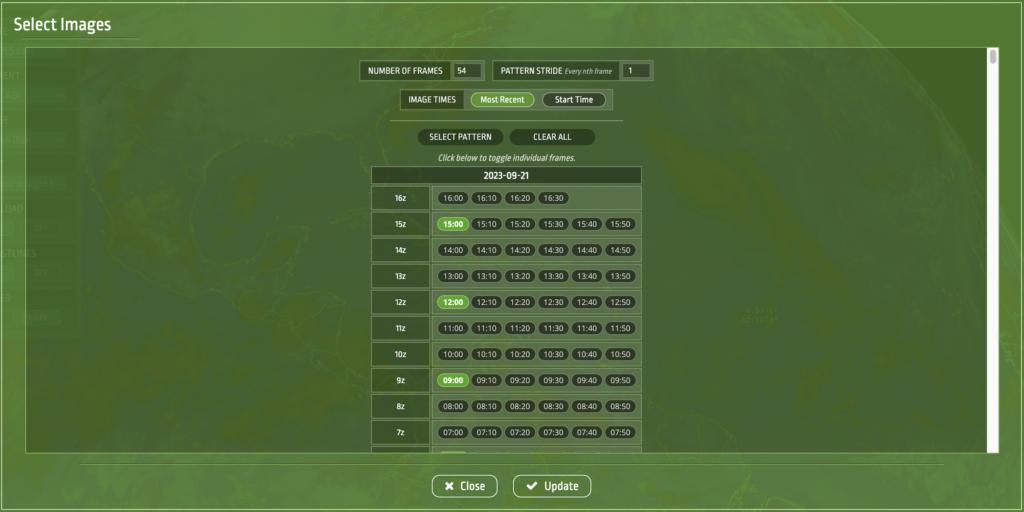A week of Atlantic activity viewed from CSPP Geosphere
CSPP Geosphere, often featured on this blog, is a website which allows users to view near-real-time imagery of GOES-East and GOES-West ABI data. All sixteen spectral bands on the ABI are available to view, along with RGB imagery. Full disk products are available, along with Continental United States (CONUS) and the two mesoscale sectors. Every ten-minute Full disk frame of data is included on CSPP Geosphere. The data is archived back approximately two weeks, allowing users to look at past events. The interface of the CSPP site allows the user to select specific time frames they are interested in viewing. CSPP allows users to save animations with 144 or fewer frames, making the frame selection tool very useful.
To create an animation like the one below, the user can select a frame every third hour, going back seven days. This creates a weekly animation, showing frames every three hours (0000Z, 0300Z, 0600Z, 0900Z, etc.) for each day.

The video shows a fairly active week for cyclones in the Atlantic. Hurricane Lee made landfall on 2023-09-16 as a post-tropical cyclone on the western coast of Nova Scotia. There is also Hurricane Margot, which has veered to the east to the mid-Atlantic, far away from any coastline.
On 2023-09-17, the structure which will become Hurricane Nigel becomes quite apparent. It is designated a hurricane on 2023-09-18 at 0900Z. By 2023-09-19 at 0300Z, the rotational structure is clear and an eye is apparent. On 2023-09-20 around 1200Z, Nigel’s path begins to move eastward. It is forecast to devolve into an extratropical cyclone and currently poses no threat to human populations.
The full disk animation from CSPP Geosphere allows users to view many interesting weather phenomena over the Atlantic Ocean. Along with the lifecycles of hurricanes, one can see large amounts of dust blowing off of the Sahara Desert in West Africa. At the mouth of the Amazon River, there is visible river sediment outflow from the Amazon’s delta and estuary.

